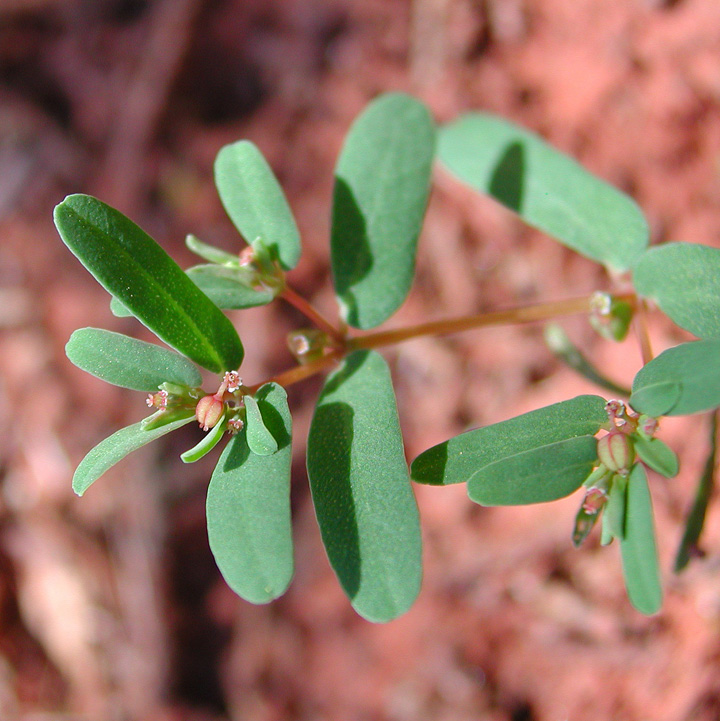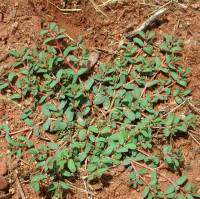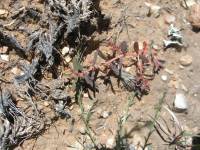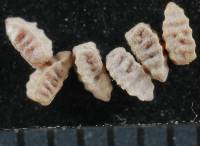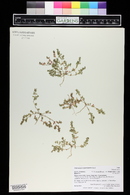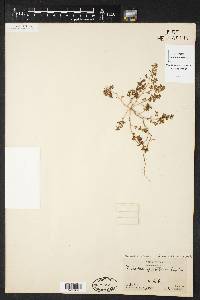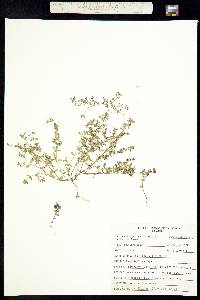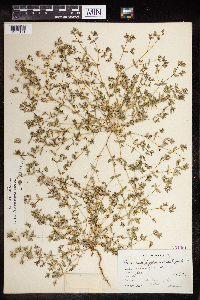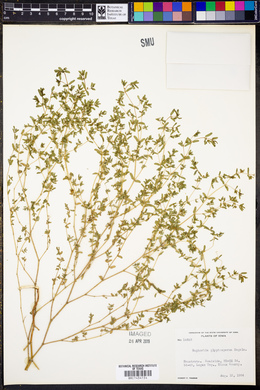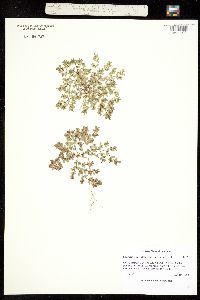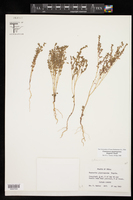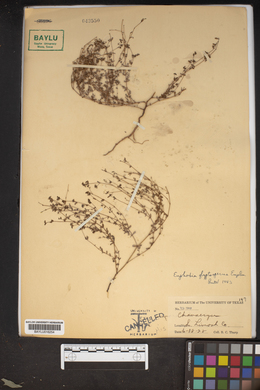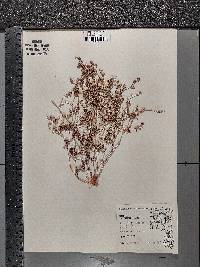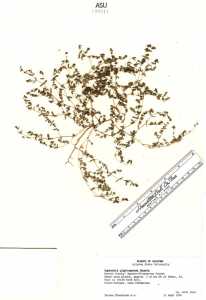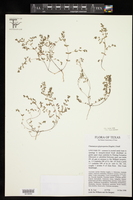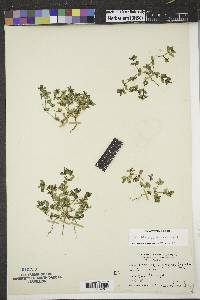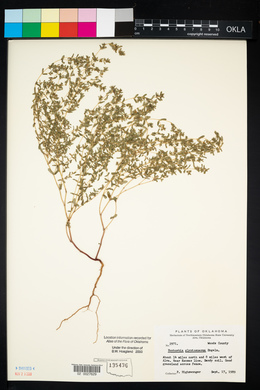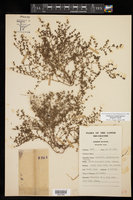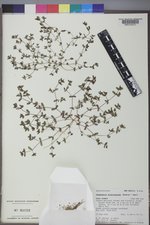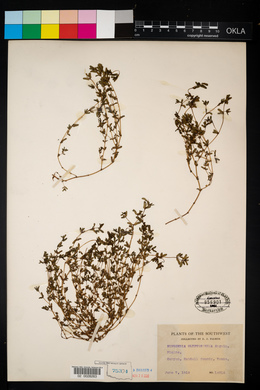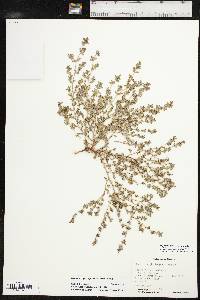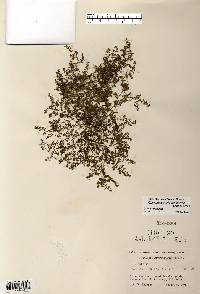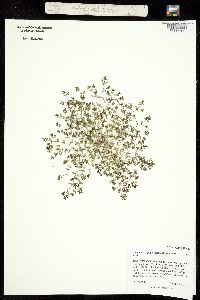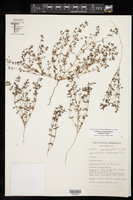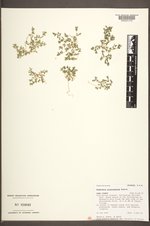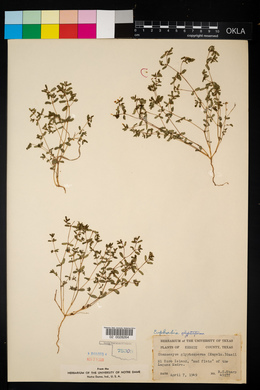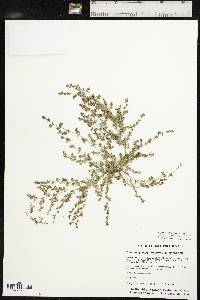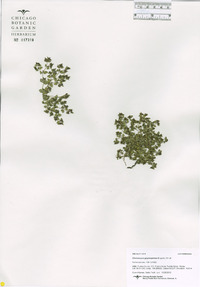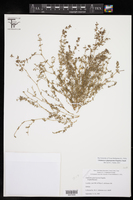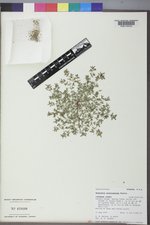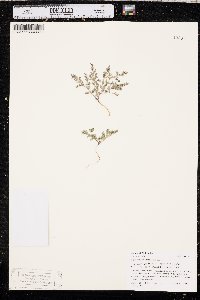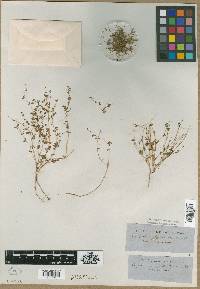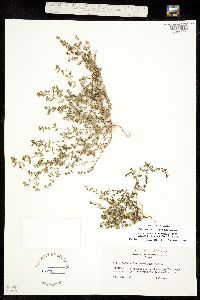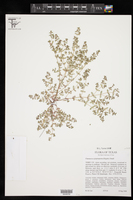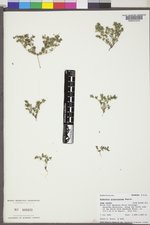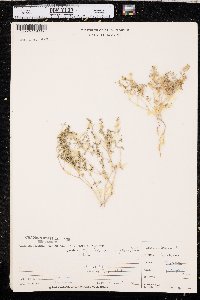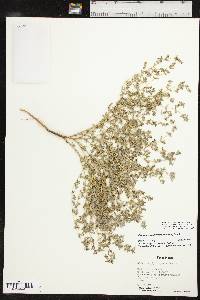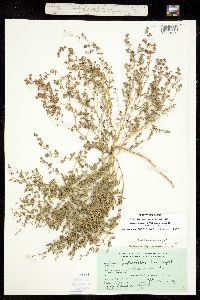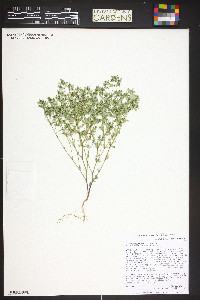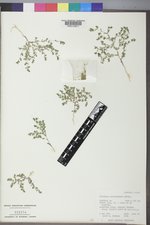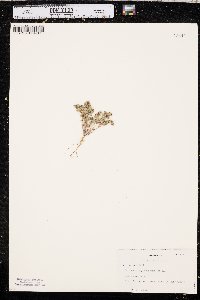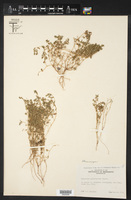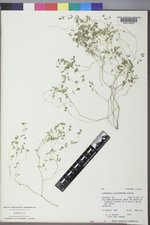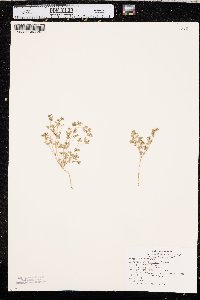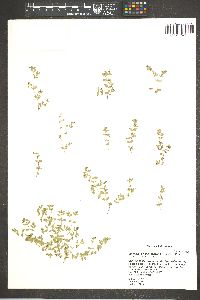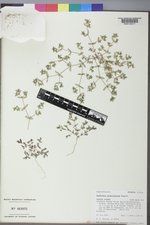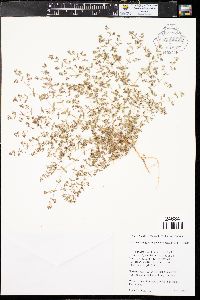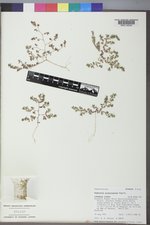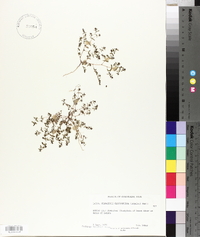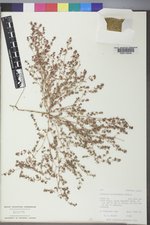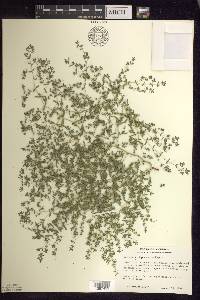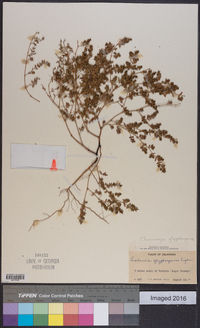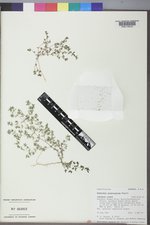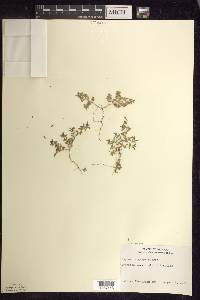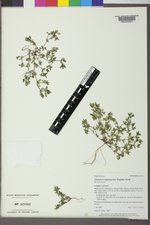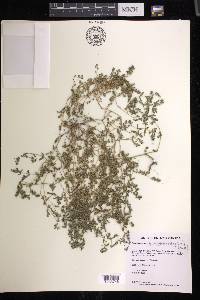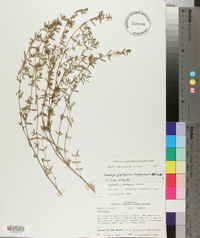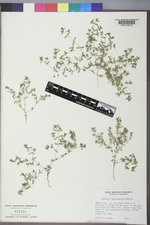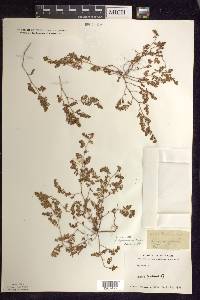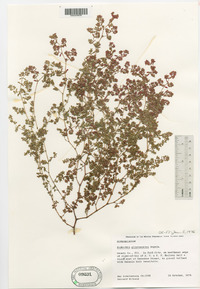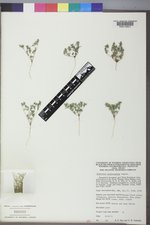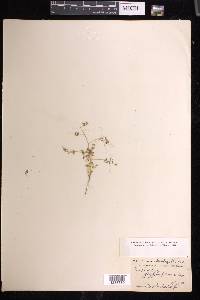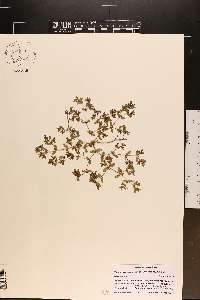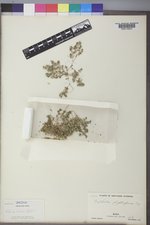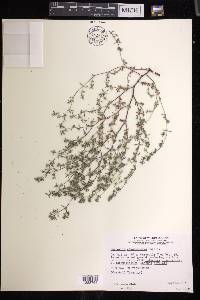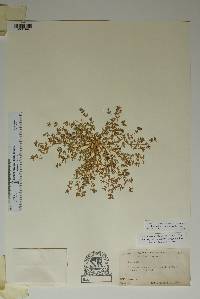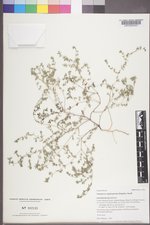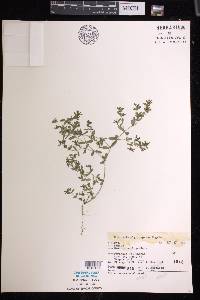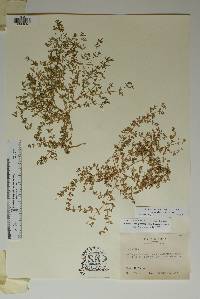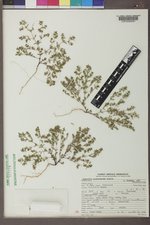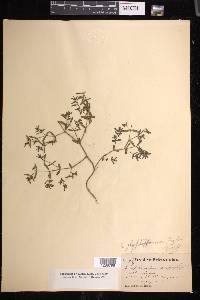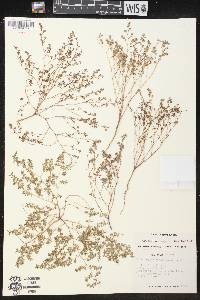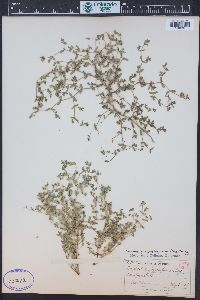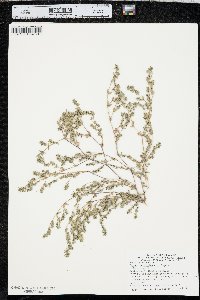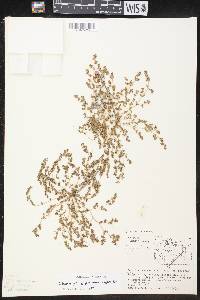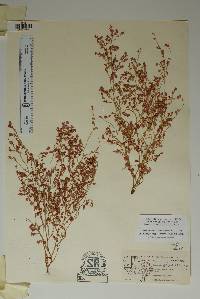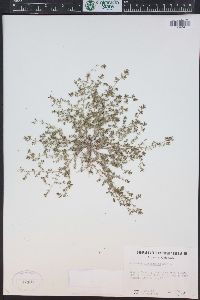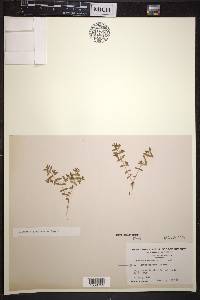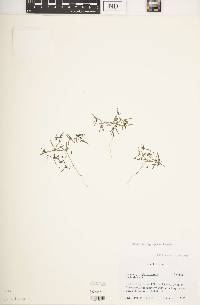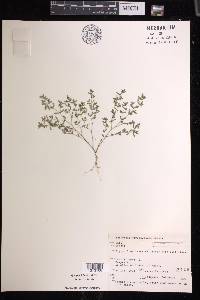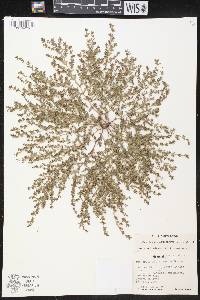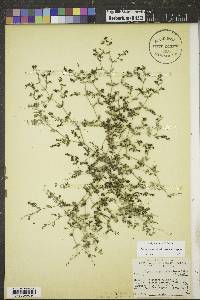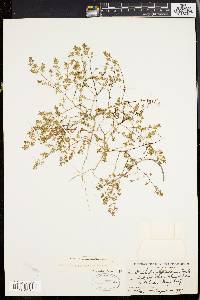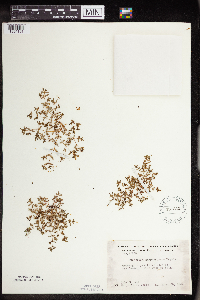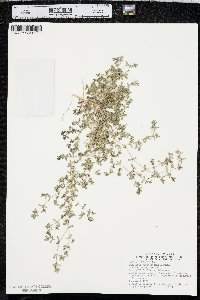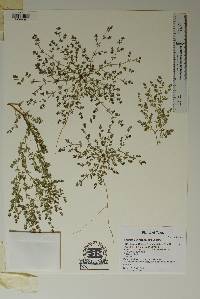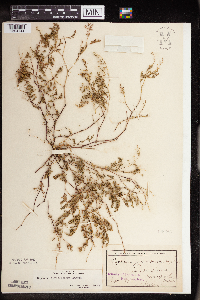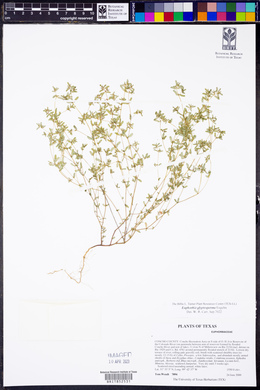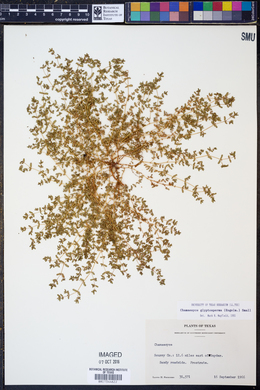
|
|
|
|
Family: Euphorbiaceae
Rib-Seed Sandmat, more...ribseed sandmat, rib-seeded sandmat, ridgeseed spurge
[Chamaesyce glyptosperma (Engelm.) Small, moreChamaesyce glyptosperma var. integrata Lunell, Euphorbia glyptosperma var. pubescens] |
Jepson 1993, Kearney and Peebles 1969, McDougal 1973 Duration: Annual Nativity: Native Lifeform: Forb/Herb General: Herbaceous annuals, stems prostrate, sometimes ascending, to 35 cm long, herbage glabrous, stems with milky sap. Leaves: Opposite, oblong to ovate, 3-15 mm long, entire to serrulate, especially towards the rounded apex, bases unequal, stipules awl-shaped to thread-like, distinct, blades on short petioles. Flowers: Inflorescence small, seemingly perfect, staminate flowers 1-5, surrounding the central pistillate flower in glomerules, pistillate flowers pinkish with white petaloid appendages, involucres (cyathium) obconic, less than 1 mm wide, glands elliptic to oblong, these less than 0.5 mm, appendage wider than the glands, scalloped, white, style divided for less than half its length. (These flowers are seemingly perfect, the cluster consisting of a central pistillate flower with 1-5 radial glomerules of staminate flowers, these surrounded by a involucre of glands subtended by the petaloid appendages). Fruits: Capsule with 3 lobes, 1.5-2 mm long, widest below the middle, glabrous. Seeds white to light brown, to 1 mm long and 0.5 mm wide, radially ovate, the faces with 3-5 transverse ridges. Ecology: Found on dry ground from 700-1,000 ft (213-305 m); flowering June-September. Distribution: New Brunswick to British Columbia, south to Texas and Arizona. Notes: The creeping, pink stems of this sandmat along with the oblong, bright green, toothed leaves and the pinkish flowers help to roughly identify this plant. Seeds are important to the correct identification of this species, collect them if you can. The currently accepted name of this species is Chamaesyce glyptosperma. Ethnobotany: There is no specific use recorded for the species, but the genus has many uses. Synonyms: Chamaesyce glyptosperma Editor: LCrumbacher 2011 Etymology: Euphorbia is named for Euphorbus, Greek physician of Juba II, King of Mauretania, while glyptosperma comes from glypto, "to carve," and sperma, in compound words signifying "seeded," thus "carved-seeded," the ashen-gray globose seeds being coarsely pitted. Glabrous annual; stems mostly prostrate, freely branched, 1-3 dm, often forming mats; lvs narrowly to broadly oblong or ovate, 4-15 mm, strongly inequilateral, minutely serrulate, especially on the rounded summit, varying to entire; appendages short but evident; stamens 1-5 (typically 4) per involucre; fr depressed-ovoid, sharply 3-angled, 1.5-2 mm; seeds 1-1.3 mm, sharply 4-angled, marked with several conspicuous transverse ridges. Dry sandy soil; Que. and N.B. to B.C., s. to N.Y., Ind., Mo., and Ariz. June-Oct. (Chamaesyce g.) Gleason, Henry A. & Cronquist, Arthur J. 1991. Manual of vascular plants of northeastern United States and adjacent Canada. lxxv + 910 pp. ©The New York Botanical Garden. All rights reserved. Used by permission. Plant: Annual; stem prostrate, glabrous; sap milky Leaves: cauline, opposite, short-petioled, 3-15 mm; stipules separate, thread-like; blade ovate to ovate-oblong, glabrous, tip rounded, margin finely toothed INFLORESCENCE: flower-like, generally 1 per node; involucre < 1 mm, obconic, glabrous; gland < 0.5 mm, elliptic; appendage wider than gland, scalloped, white Flowers: Staminate flowers 1-5, generally in 5 clusters around pistillate flower, each flower a stamen; Pistillate flower: 1, central, stalked; ovary chambers 3, ovule 1 per chamber, styles 3, style divided < 1/2 length Fruit: capsule, 1.5-2 mm, ovoid, lobed, glabrous; Seed 1-1.5 mm, ovoid, transversely 3-4- ridged, white to light brown Misc: Dry ground; 200-300 m. Notes: Calyx-like involucre= cyathium. The cyathium with white petaloid appendages. References: Kearney & Peebles; Arizona Flora. McDougall; Seed plants of Northern Arizona. ASU specimans From Flora of Indiana (1940) by Charles C. Deam I have found this spurge only three times although it may be rather frequent since it can easily be mistaken for other species of the genus. My specimens were found in dry sandy and gravelly soil. ...... Indiana Coefficient of Conservatism: C = 2 Wetland Indicator Status: N/A |
This project was made possible in part by the Institute of Museum and Library Services [MG-70-19-0057-19].
Powered by Symbiota

